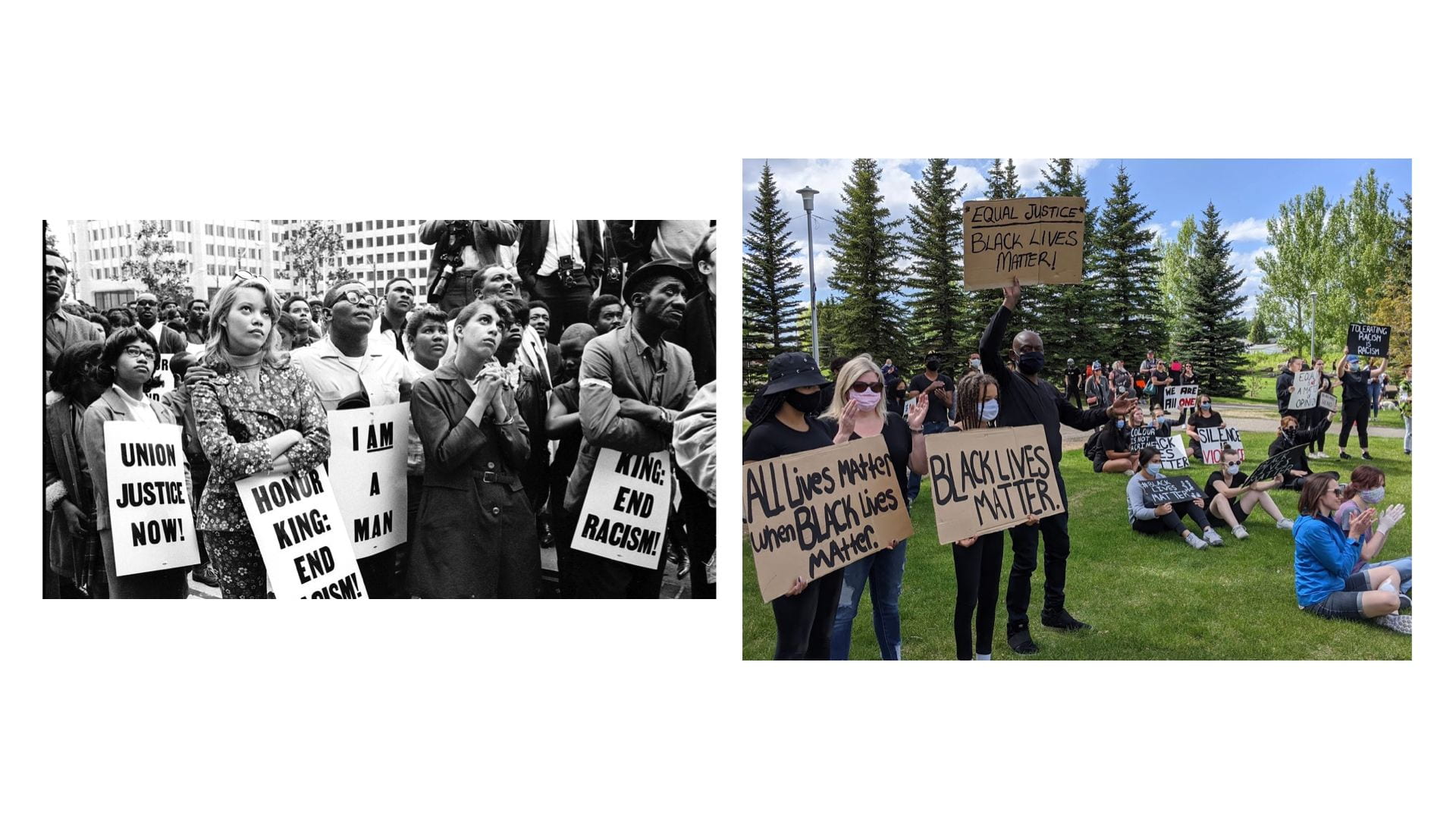For this think and create artifact, I took photos from both the 1965 Selma marches in Alabama, and current Black Rights Matter protests around the world in recent weeks. These photos show parallels between now and then, and the repeating history of injustice that we are living through.
Since the beginning of April, we have been learning about the Civil Rights Movement of the 19th Century. As we haven’t been able to attend school in person, we’ve instead been having 2-3 hour long Zoom calls each week, along with the use of supplemental resources such as movies and articles. We’ve been tasked with watching a variety of both narrative and documentary films, including Mississippi Burning (1988), Klansville U.S.A. (2015), and Selma (2014). We’ve also been having online Socratic Seminars to discuss the meaning and themes within these films. These seminars have been a really important way to better understand these stories with information I may not have noticed/fully understood on my own.
One of the historical campaigns that stood out to me the most was the Selma Marches in 1965. The Selma Marches were protests within the state of Alabama against the racial discrimination in the state’s social system. These marches were specifically focused on voting rights. The first march on March 7th, 1965, was planned after the police killing of a 26-year-old man named Jimmie Lee Jackson. This murder caused outrage and sparked the urgency of these voting rights. At this march, police attacked the 600 some peaceful protesters with tear gas and weapons. This sparked nationwide publicity, with the day being known as Bloody Sunday. The second march took place 2 days later on March 9th, 1965. This march was led by Martin Luther King, Jr., and he turned back marchers as they reached the bridge they had been attacked at two days prior. A third march continued until March 25th, when around 25 thousand protesters from across the country reached the state capital of Alabama. They demanded proper voting rights for African American citizens. This protest is significant to the history of America because it reflects both positive and negative outcomes of peaceful protest. Although marchers eventually got the voting bill passed, it was not without sacrifice. Protesters were attacked ruthlessly by police and law officers. However, the actions of these marchers changed the world today. This proves to be a quintessential turning point in the civil rights movement.
The marches on Selma very closely parallel the Black Lives Matter protests currently happening across the globe. These marches were spurred after the death of George Floyd, a black man killed by police. There have been peaceful protests mainly in America but spread across the globe, that have become violent due to police interference. Similarly to Selma, the system of law is corrupted in a way that gives way for racism to exist and be acted upon within the police department. These protests have been for the proper legal action to be taken against police officers who kill black civilians, such as Floyd’s killers. This has led to discussion and suggestion of defunding police departments. The causes as well as the consequential outcomes of these two actions are deeply paralleled with the corrupt legal systems which are deeply rooted against black people and other people of colour.
This repetition is eerily similar and points to rooting causes within the police system. As the police system was formed initially around the roots of slavery, it is clear that while times have changed since then, the criminal justice system is still deeply discriminative against people of colour. This systemic racism can’t simply be changed from outside of the system: the system needs to be entirely reformed to do this. The actions taken by civilians to protest this issue are already leading to important changes in our world. There is no way of knowing what will happen, but these steps are crucial for the change and progression of our world.
My full artifact can be seen here.












